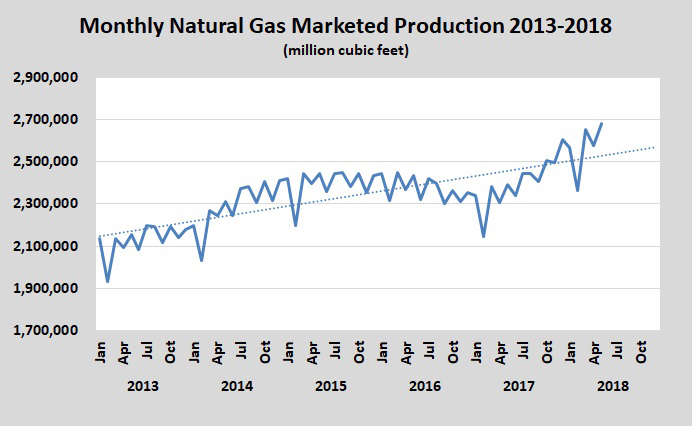US natural gas production rises, increases propane supply
The Energy Information Administration’s official monthly data for May 2018 natural gas production showed an output of 2.68 billion cu. ft. That is about 86.5 million cu. ft. per day.
U.S. natural gas production is rising, with growth coming from the seven major shale plays in the United States. Rising natural gas production is the engine for growth in propane supply. About 80 percent of U.S. propane now comes from natural gas processing, and the remaining is a byproduct of crude oil refining.
Propane supply from refineries has been fairly flat in recent years. Increases from natural gas processing have totally changed the supply landscape.
The chart above shows the growth in propane supply from natural gas processing. Growth in supply has been quite pronounced since the middle of last year due to a surge in natural gas drilling and output.
The United States became a net exporter of propane in 2010. Exports were more than 330 million barrels in 2017, compared to just 15 million 10 years ago. Propane exports exceeded imports by more than 283 million barrels last year.
With the push to increase U.S. liquefied natural gas exports, U.S. natural gas production is expected to continue to rise. This means the U.S. propane supply will remain at a level higher than can be consumed domestically, so exports will be the key mechanism for supporting prices. The high rate of production, resulting in the major oversupply for the U.S. domestic market, makes propane inventory positions far less critical than they were when the U.S. needed imports in the winter to augment U.S. production in meeting domestic demand.
For the foreseeable future, propane supply will be much higher than domestic demand. That doesn’t mean logistical issues – or even too aggressive of exporting activity – can’t result in tight domestic supplies from time to time, especially in local markets.
Building supply allocation, having alternative supply points, and the flexibility to buy at posting or on prices indexed to the major hubs all remain important in managing propane supply risks.
Call Cost Management Solutions today for more information about how Client Services can enhance your business at (888) 441-3338 or drop us an email at info@propanecost.com.


















